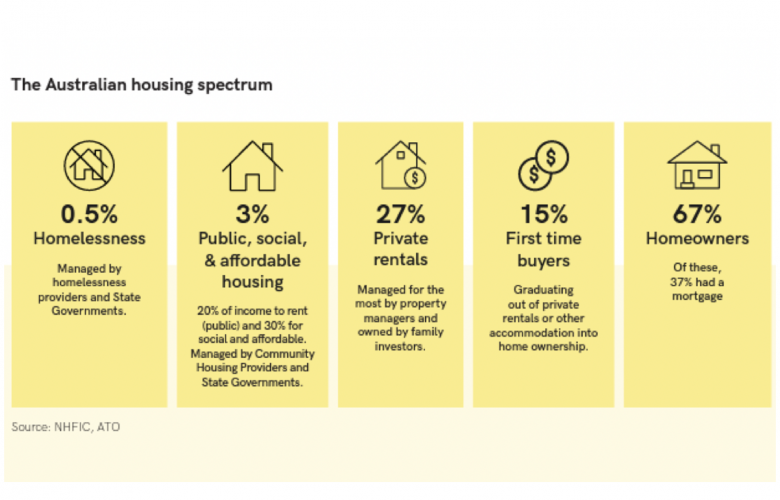National plan must focus on more prosperous Australians and Australia
Contact
National plan must focus on more prosperous Australians and Australia
REIA has presented a comprehensive submission on a National Plan for Housing and Homelessness to the Department of Social Services (DSS) in a bid to address the crucial housing issues facing Australia.
REIA has presented a comprehensive submission on a National Plan for Housing and Homelessness to the Department of Social Services (DSS) in a bid to address the crucial housing issues facing Australia.
REIA President, Hayden Groves said the Plan must respond to the severe housing shortage, an ageing population, challenging geopolitical conditions, a demand from consumers for more trust and transparency and adapt to a NetZero economy.
“The reality is that this housing plan comes at a time where Australia is one of the fastest growing countries in the OECD, just signed up to NetZero, with a rapidly aging population, declining home ownership, a tight labour market and housing consumers that are demanding a more digital and transparent property transaction.
“It’s in this context we need to consider the factors for the Plan to map out Australia’s housing requirements to 2024.
“This means big picture reform like phasing out stamp duty which would conservatively introduce an additional 4% of listings back into the sales market; with broader ranging economic and societal benefits to be simultaneously achieved. It was a broken promise with the delivery of the GST and now it’s a housing supply problem.
“We also need to maintain a laser like focus on helping Aussies into home ownership. Simply saying it’s too hard and ‘let them rent’ is a complete disservice to young Australians.
“We know home ownership is a hallmark of long-term prosperity and we must tackle this in the Plan.”
Mr Groves also said that key investment cohorts need to be considered in the Plan strategically not ideologically.
“Australia’s residential property market is worth $10 trillion compared to superannuation which currently sits at $3 trillion.
“Our sector currently has residential rental assets under management are estimated to be $3 trillion, supplied by around 2.2 million Australian family investors.
“So much emphasis and hope has been placed by the Australian Government and civil society stakeholders on institutional investment.
“This includes repeated suggestions that negative gearing should be phased out as an option for Australian households which would have the upshot of benefitting the big end of town like multinational corporations and the very super funds you are required by law to put your pay into.
“To make the Plan effective, we actually need to look at the respective pools of capital and grasp that family investment will be critical in every way in achieving our housing goals by 2034. And ask the question: How can we get more family investors into housing over the next ten years rather than less?”
Mr Groves said that much of the feedback on the Plan is focused on the here and now rather than the nation building task we have ahead of us.
“The National Plan for Housing and Homelessness (the Plan) has been a standing policy of REIA since 2020 and kicking off work on it is a good first step as Australia navigates challenging global conditions. However, we must caution against a plan that only considers 2023 conditions.
“The demand side of Australia’s economy remains strong with inflation moderating from its peak in 2022, however the Reserve Bank of Australia has indicated that more rate raises will be made to contain inflation if necessary.
“Households have remained relatively resilient due to strong labour market conditions, however, nationally, home loans remain at their most unaffordable point since 2008 in terms of income to mortgage ratio.
“Rental vacancy rates remain at a near historic lows across capital cities with low housing supply relative to population growth, indicative of tight rental market conditions in the year ahead. Nevertheless, rents over a twenty-year trajectory have been stable.”
REIA’s Submission to the Issues Paper can be viewed here.





